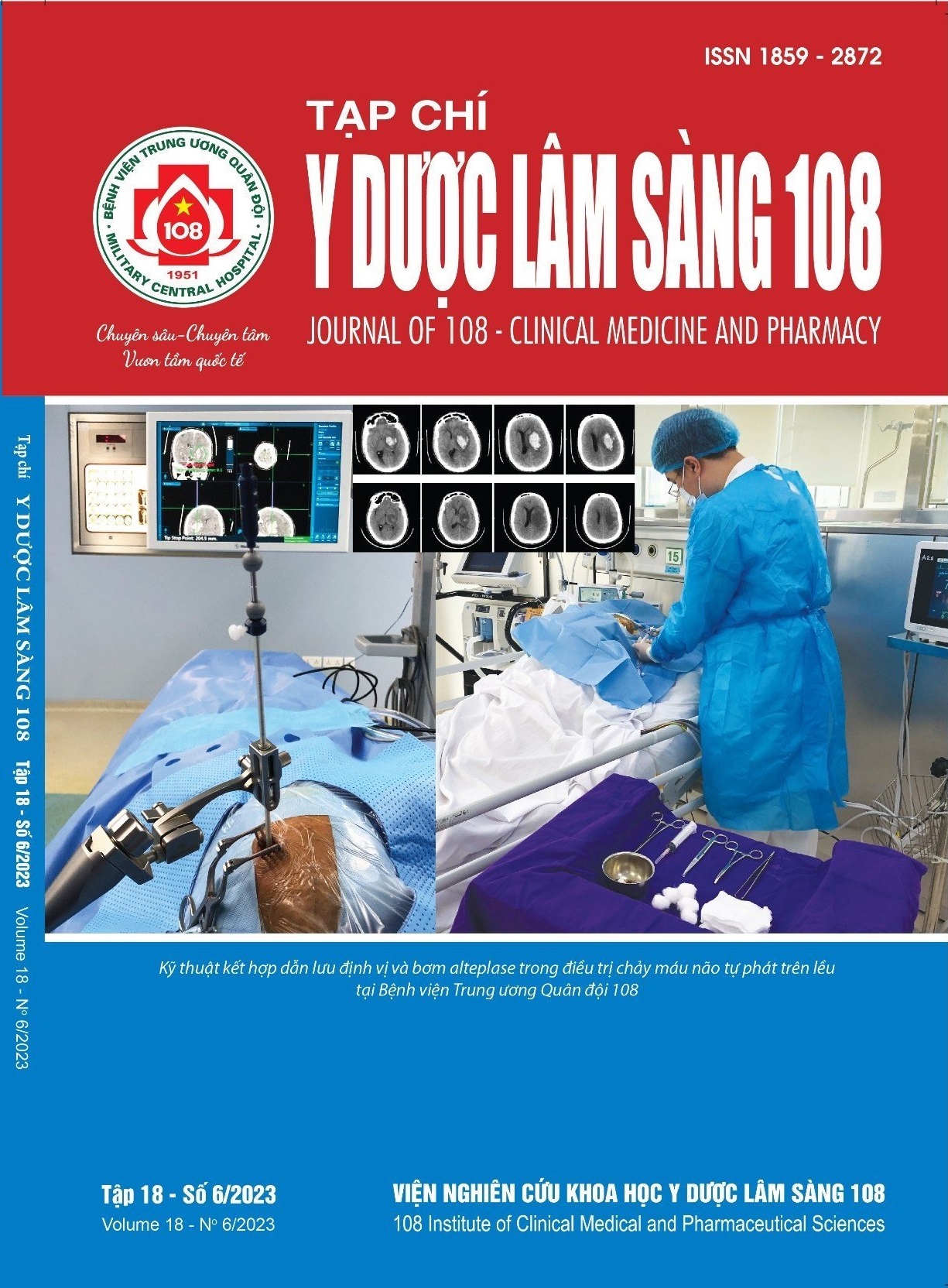The concentration of serum vitamin B12, vitamin D3, zinc and associated factors of patients with warts
Main Article Content
Keywords
Abstract
Objective: To compare serum levels of vitamin B12, vitamin D3, and zinc of patients with warts with controls and to determine the relationship between the concentrations of these three substances and the clinical characteristics of patients with warts. Subject and method: A case-control study was performed on 68 patients with warts HCMC Hospital of Dermato Venereology and 68 people in the control group. Result: The serum vitamin B12 level in the patient group was 592.5 (484.1-731) pg/ml, that was lower than which of control group 634.55 (483.3-808) pg/ml, p=0.167. Similarly, serum vitamin D3 and zinc level did not differ between the disease group and control grous. In patients with warts, vitamin B12 levels of men were lower than which of women, and in overweight - obese people lower than in lean people with p=0.02 and 0.013, respectively. Patients < 30 years old had lower vitamin D3 levels than people over 30 years old, p=0.002. Serum zinc concentration had weak correlation with the number of wart lesions, r = -0.329, p=0.006. Conclusion: There was no significant difference in serum vitamin B12, vitamin D3 and zinc concentrations between the disease group and the control group. There is an association between vitamin B12, vitamin D3 and BMI, age, sex, number of warts.
Article Details
References
2. Choi HS, Oh HJ, Choi H, Choi WH, Kim JG, Kim KM, Kim KJ, Rhee Y, Lim SK (2011) Vitamin D Insufficiency in Korea A Greater Threat to Younger Generation: The Korea National Health and Nutrition Examination Survey (KNHANES) 2008. The Journal of Clinical Endocrinology & Metabolism 96(3): 643-651.
3. Ghanem AH, Esawy AM, Khalifa NA, Kamal HM (2020) Evaluation of serum interleukin 17 and zinc levels in recalcitrant viral wart. J Cosmet Dermatol 19(4): 954-959. doi: 10.1111/jocd.13106.
4. Wilson JD, Brown CB, and Walker PP (2001) Factors involved in clearance of genital warts. International Journal of STD & AIDS 12(12): 789-792.
5. Margalit I, Cohen E, Goldberg E, Krause I (2018) Vitamin B12 deficiency and the role of gender: A cross-sectional study of a large cohort. Ann Nutr Metab 72(4): 265-271.
6. Öztekin C, Öztekin A, Taştan K, ÖZmen GG, Pektaş SD (2018) The association between verruca vulgaris and vitamin D: Is there a casual link?. Acta médica costarricense 34: 1047-1050.
7. Raza N and Khan DA (2010) Zinc deficiency in patients with persistent viral warts. J Coll Physicians Surg Pak 20(2): 83-86.
8. Shalaby ME, Hasan MS, Elshorbagy MS, Abo Raya AR, Elsaie ML (2022) Diagnostic and therapeutic implications of vitamin D deficiency in patients with warts: A case-controlled study. J Cosmet Dermatol 21(3): 1135-1142. doi: 10.1111/jocd.14156.
9. Tamer F, Yuksel ME, and Karabag Y (2020) Pre-treatment vitamin B12, folate, ferritin, and vitamin D serum levels in patients with warts: A retrospective study. Croat Med J 61(1): 28-32.
10. Joob B and Wiwanitkit V (2019) Vitamin D level and viral warts. Journal of Egyptian Women’s Dermatologic Society 16: 71.
 ISSN: 1859 - 2872
ISSN: 1859 - 2872
